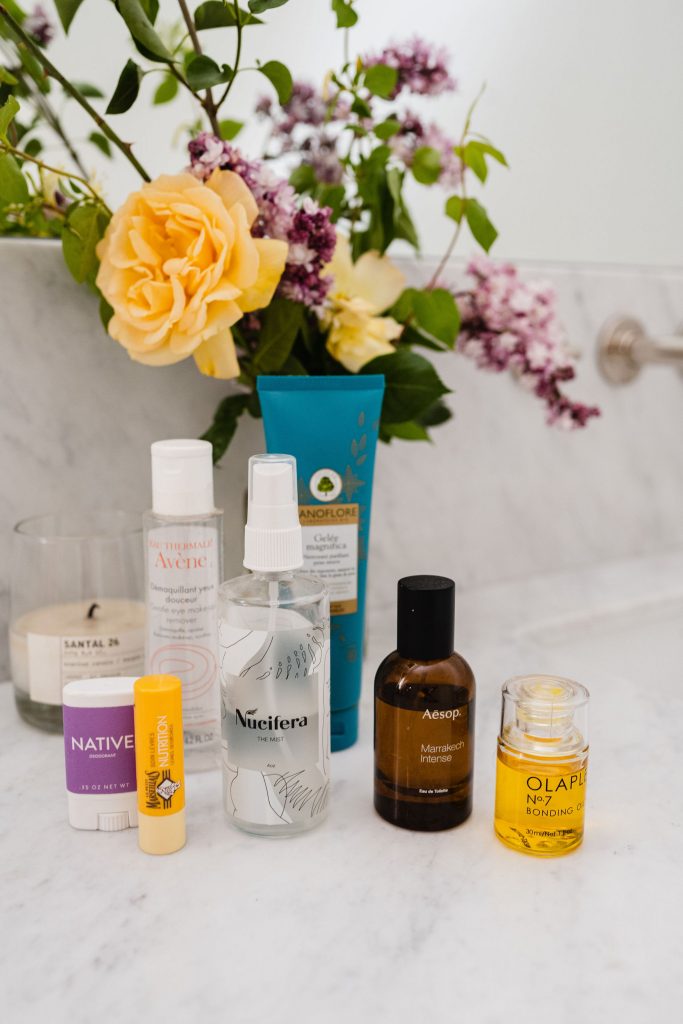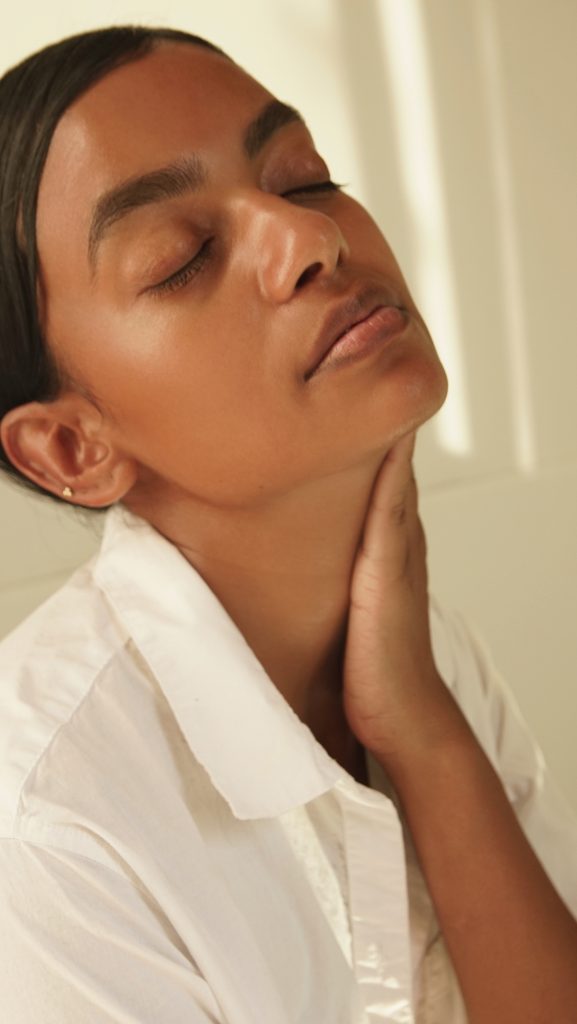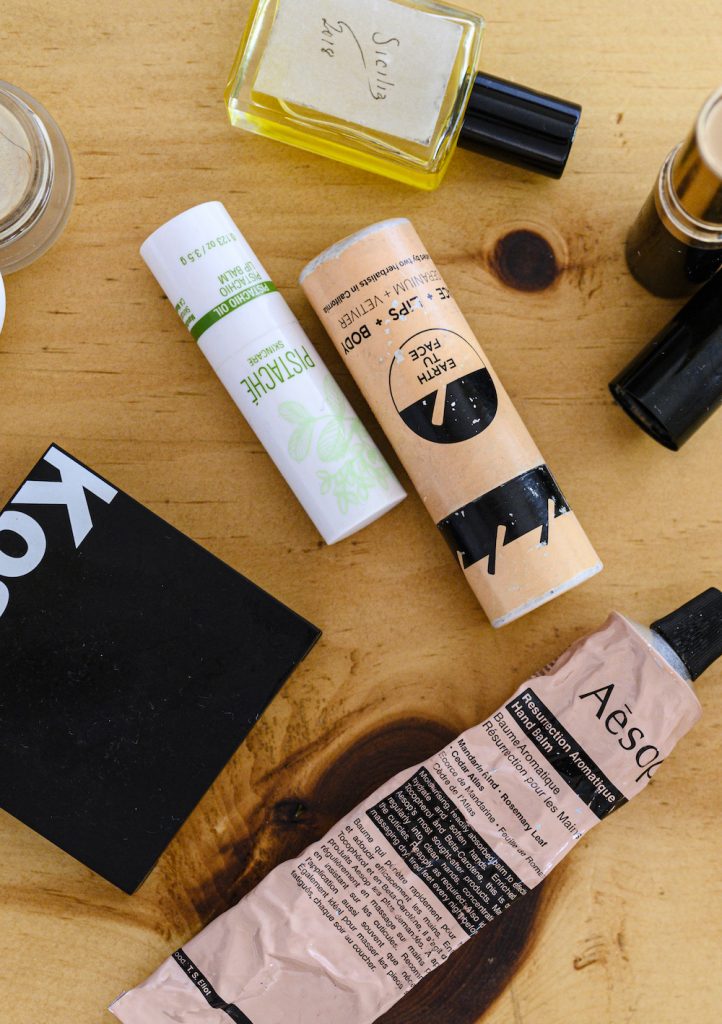
It takes years to cultivate a skincare routine. When it comes to taking your skincare routine to the next level, the best approach is to ask your dermatologist for treatments tailored to your skin. But taking home a prescription is one thing, creating a nighttime routine is another. If you’ve ever put out a Google search wondering “how to use tretinoin in skincare routine” don’t worry, you’re definitely not alone.
Crafting a skincare routine can be a messy art. Trial, error, trial, (more error), then finally you have a set of products that work. Until… they don’t. Whether you’re greeted with an unexpected breakout or tempted by a shiny new product, that carefully curated selection on your top shelf is bound to shift.
With new skin concerns come new ingredients that force you to change up your whole regimen. Enter: the tricky dance of learning how to use tretinoin in skincare routine.
Featured image of Marie Kouadio Amouzame by Belathée Photography.

Subscribe
Get Breathing Space
A twice-monthly note from me to you. What’s currently on my mind, in my cart, on my plate, and more. Drop your email to subscribe.
Thanks for Signing Up!
Oops!
Looks like you’re already signed up or your email address is invalid.
Oops!
Looks like you unsubscribed before click here to resubscribe.
Tretinoin is the most popular prescription retinoid—and for good reason. It’s effective, comes in different concentrations for different issues, and is a more targeted treatment than over-the-counter retinol. If you’ve tried your hand at retinol night creams but are still looking to fade hyperpigmentation, fight acne, and reduce signs of aging, tretinoin might just be for you. But to get the most out of it, it’s best to tailor the rest of your routine to prep your skin for your tretinoin journey.
Maybe it’s just me, but I always answer the call of a buzzy new ingredient, a well-packaged aesthetic, and the latest luxury holy grail. My routine has mostly been the same for the past few years, but I make a few exceptions. And to be totally honest, I barter with myself. If I finish one bottle of vitamin C, I let myself buy a replacement from the newest brand I’ve been eyeing on Instagram. Or, when the seasons change, I make an effort to myself mix things up. Exfoliating masks and collagen body creams in the winter, dewy serums and sunscreen in the spring, and so on.
But it’s not just my temperaments and whims that cause my skincare to shift and sway. Over the years, I’ve learned to listen to my skin. I calm down my routine when it gets overwhelmed, and I step it up when I break out. This is how I reap the benefits of my products. I learned this as a teenager when I was prescribed a topical acne treatment and it’s stayed with me ever since. Therefore, if you’re wondering how to use tretinoin in skincare routine, listening to your skin is paramount.
Everything You Need To Know About How To Use Tretinoin in Skincare Routine
What is tretinoin?
Tretinoin is a derivative of vitamin A, aka a retinoid. Tretinoin usually comes in a gel or cream form. Less commonly, it can also be applied topically in its liquid form, or even taken orally. It’s one of the most popular ingredients in prescription-strength acne treatments. Like other retinols, tretinoin also helps fade fine lines and hyperpigmentation. Unlike retinols you’re familiar with, tretinoin is much stronger. So much so, that it’s only available with a prescription.
Tretinoin comes in three concentrations: 0.025%, 0.05%, and 0.1%. 0.025% is the mildest and is generally prescribed for overall skin improvement or mild acne. 0.05% is usually prescribed for anti-aging and reducing fine lines and wrinkles. 0.1% is the highest concentration and should be used with caution. Usually prescribed for people who already have experience with retinoids, it’s used for severe cases of acne, melasma, deep wrinkles, and fine lines.
What effect does tretinoin have on the skin?
Tretinoin accelerates cell turnover. But so do over-the-counter retinol creams. So what’s the difference between tretinoin and retinols you can find in your drugstore beauty aisle? Potency. For any vitamin A derivative to work, your skin needs to convert it to retinoic acid. I’ll spare you too much of the science, but tretinoin is stronger because it’s already in the form of retinoic acid. This means your skin doesn’t have to waste time converting it, and it can get right to work.
Because of its strength, tretinoin works faster than OTC retinols. It stimulates cell generation, sloughs away dead skin cells, and sweeps away bacteria from your pores. Additionally, studies show tretinoin helps stimulate collagen production and block acne-causing inflammatory pathways. Combined, this makes it a powerful acne fighter. It has also been FDA-approved for signs of photoaging, like fine lines and dark spots. Overall, it’s a highly effective ingredient for clearer, smoother, more even skin.
Who should consider using tretinoin? Who shouldn’t?
Tretinoin is only available with a doctor’s prescription, so consult a dermatologist if you’re looking to add it to your routine. Your skin type and concerns will determine if tretinoin is right for you. If you’re looking to address fine lines, dark spots, severe acne outbreaks (including cystic acne), and skin texture concerns, tretinoin might be an effective treatment.
To be a good candidate, you also have to have really resilient skin. This means pretty much no sensitivity at all. Most experts recommend starting with an OTC retinol to see how your skin reacts. Tretinoin doesn’t have to be your first choice. Starting with milder retinol might address your concerns. It’s also better suited for people with indented acne scars, severe melasma, or hyperpigmentation. Or, if you’re over 35 and looking to reverse sun damage and signs of aging, tretinoin might be a good option.
As a stronger retinoid, tretinoin is probably not right for anyone who has any degree of sensitive skin. A history of eczema, rosacea, or frequently irritated skin also points to a delicate skin barrier, which tretinoin could compromise further. It’s also probably best to skip using any vitamin A if you’re pregnant, just to be cautious. As in all cases, consult your doctor to find out if tretinoin could be right for you.
Is tretinoin safe to use?
When used properly, tretinoin is perfectly safe to use. However, due to its potency, users might experience dryness and increased sensitivity to the sun when they start using tretinoin. To combat this, make sure to up your moisturization and sun protection. It’s also best to start slowly, using tretinoin a few nights a week then upping your frequency as your skin adjusts. Tretinoin should also not be used excessively or with other actives like acids. This could damage your moisture barrier.
What is the “purge”?
Unfortunately, for many users, the notorious tretinoin “purge” is real. But it’s not a sign to turn back, give up, and run away screaming. Actually, it’s the opposite! Going through the purge means your skin is adjusting to the treatment and learning how to repair itself.
When you start using tretinoin, your skin is going through more rapid cell turnover than it’s used to. This means all the acne-causing irritants and bacteria are pushed to the surface faster. This leads to inflammation, which causes breakouts. Even if you aren’t using tretinoin to treat breakouts, the resurfacing process might bring latent bacteria to the head, meaning those seeking anti-aging effects might experience the purge, too.
How can you reduce the purge and tretinoin sensitivity?
Though there’s not much you can do to stop the purge, resist the temptation to be harsh with your skin. This will only irritate your skin further at such a volatile time. Instead, be as gentle as possible.
Starting slowly with your tretinoin use might reduce the intensity of your purge. if you feel excessive inflammation, you might want to scale down to less frequent use. Some ingredients are helpful in soothing the effects of tretinoin, like niacinamide. Niacinamide is a great supplement to your routine because it helps calm irritation while bolstering the effects of your retinoid.
How do you use tretinoin in your routine?
Deciding whether or not to start tretinoin isn’t the only question. How do you implement tretinoin in your skincare routine? What’s the best way to use tretinoin for the best results? Many have asked, and the answer is surprising simple.
When you start tretinoin, your skin will be going through a lot, very fast. Be kind to your visage and do everything to make the transition as easy as possible. At the outset of your tretinoin journey, focus on ingredients that won’t strip your skin or cause further irritation. You can also add ingredients that work well alongside your prescription retinoid. And of course, you’ll have to take your suncare even more seriously. Use tretinoin at night, then slather on sunscreen to protect your light-sensitive skin during the day. Eventually, you can reintroduce ingredients like acids back into your routine—but only when your skin is less sensitive.
If this sounds like you have to rebuild your whole routine, I’m not going to lie: you might. Here’s a guide to choosing tretinoin-friendly products to reinvent your skin routine.
The Best Tretinoin Products To Add to Your Skincare Routine
Every product is curated with care by our editors. If you buy something through our links, we may earn a small commission at no cost to you.
Cleanser
A good cleanser will keep your skin clean without stripping it of natural oils. Be wary of ingredients like sulfates, perfumes, or alcohol in your cleaner. These will dry out your skin at a time that you need moisture the most. Opt for something gentle, but effective, which doesn’t contain acids. Also, make sure to cleanse gently with your fingertips. Scrubbing with a facial tool or even a washcloth might be too abrasive while on tretinoin.
Toner
Toning can prime your skin with extra hydration, but only if you choose the right one. Skip anything with alcohol, and instead opt for a hydrating and refreshing supplement to your routine. If you’re used to an acid toner, you’re going to have to retire it for a while on tretinoin. Either way, apply your toner, then wait for it to dry before applying tretinoin. You can also load your skin up with moisture during this step by using a gentle, hydrating essence.
Serums
To avoid overstimulating your skin while you start tretinoin, most experts suggest saving serums for the morning and using tretinoin at night. Good serums are those that complement the effects of your retinoid. Niacinamide helps soothe irritated skin and protect the skin barrier. Hydrating serums help keep your skin from excessive dryness. And finally, vitamin C serums help facilitate collagen production.
Moisturizer
Keeping your skin moisturized is one of the best ways to minimize the side effects of tretinoin, like irritation and dryness. Experts suggest you use a stronger moisturizer when you start with tretinoin while being mindful of your skincare type. If you already suffered from dry skin, you’ll want to use a super-rich moisturizer. If you have oilier skin, you still want to step up your moisturization game, but it doesn’t have to be as intense. Just make sure you choose products without synthetic fragrances to keep irritation at bay.
When starting out, apply moisturizer directly after applying tretinoin to minimize potential irritation. As your skin adjusts, you can leave tretinoin on for about 20 minutes before following up with a moisturizer.
Sunscreen
I cannot express the importance of always applying your sunscreen (liberally!) This is especially true on tretinoin. Retinoids increase your sensitivity to the sun, so any work your tretinoin is doing will immediately be compromised without adequate sun protection. Try clean mineral sunscreens to provide a physical shield between you and the sun. And be sure to reapply throughout the day!
This post was originally published on March 7, 2022, and has since been updated.





